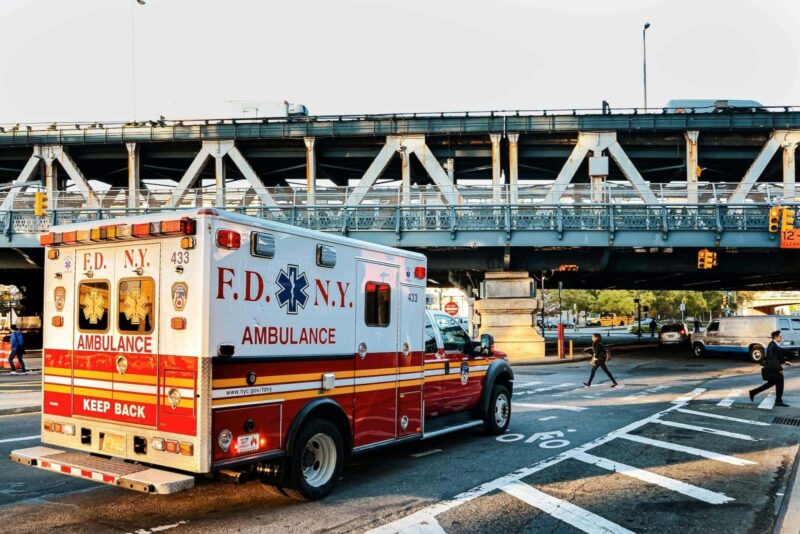Travel insurance is your last line of defense if something goes wrong on a trip—it pays for unexpected expenses like lost bags, cancelled flights, and medical emergencies. But not all policies are created equal.
What is Travel Insurance?
So you’re planning a trip and someone asked you if you have travel insurance. Wait, what? Yes, at this point, it’s perfectly reasonable to ask yourself (and the internet): what is travel insurance?
For years, I didn’t know anything about travel insurance, and I went without it. Knowing what I do now, I’ve come to believe that if you can’t afford a travel insurance policy, you can’t afford to travel.
Essentially, travel insurance covers expenses from unforeseen events like a canceled trip, lost bag, or medical treatment.
It’s important to understand how it works so you can pick the right plan. Ready? Let’s dive right into the details of travel insurance.
How Does Travel Insurance Work?
If you’re just here for a quick and dirty answer, let’s get right down to it.
When you travel, you take on risk, whether you know it or not. You put down a lot of money on flights, hotels, rental cars, and more. But what if your trip gets canceled? Oops, looks like you’re out a lot of cash.
Plus, did you know that regular health insurance plans usually don’t provide any coverage outside your home country?
Travel insurance protects you from unexpected events like these. You pay a relatively small up-front fee to a company in exchange for a guarantee that they will pay for expenses that are covered by a specific policy.
Travel insurance policies typically include two different categories of protection: trip coverage and emergency medical coverage.
- Trip insurance includes protection for the expenses of your trip. If your trip is canceled or interrupted (for a covered reason), the company will reimburse you for the cost. Trip coverage can also include reimbursements for lost baggage, delayed flights, rental car damage, and more.
- Emergency medical insurance is exactly what it sounds like. If you are injured or become ill overseas, your regular health insurance may not pay for your care. Travel medical coverage includes overseas care or emergency medical evacuation if needed.
There you have it. That’s the basics of how travel insurance works, and no, it isn’t that complicated. If you want to get into more details, let’s keep going.
Different Types of Travel Insurance
Did you know that there’s more than one type of travel insurance?
Yep, it can be broken up into several categories, from single trip insurance to long-term healthcare designed for digital nomads. The type of insurance you need will depend entirely on your trip, your destination, how often you travel, and your personal preferences.
Single-trip comprehensive coverage is most often the best choice, but not always. Here are the most important types of travel insurance so you can pick the right coverage type for you.
- Comprehensive Travel Insurance covers every aspect of your travel, from luggage to trip cancellations to emergency medical bills. For most people most of the time, this is what I recommend. I’ll dive deeper into every aspect of comprehensive travel insurance soon.
- Travel Medical Insurance only covers medical expenses, so you don’t get any of the trip expense coverage. Travel medical plans range from emergency coverage to full-fledged health care for living abroad.
- Single Trip Travel Insurance Insurance is exactly what it sounds like: insurance for a single trip. You enter your destination and travel dates to get covered during your trip.
- Annual Travel Insurance is, again, pretty straightforward. Rather than covering a single trip, annual plans include all your travels for an entire year. Note that there are often limits on how many days abroad in the year are covered.
- Nomad Travel Insurance (like the Nomad Insurance Plan from SafetyWing) is designed for people living long-term outside their home country. It typically renews monthly.
What Does Travel Insurance Cover?

Any travel insurance policy has a lot of pieces to it, and sometimes the legalese terminology can be difficult to understand. The most important thing to understand is what is covered, and what isn’t. After all, you want to know what you’re paying for, right?
There are many varieties of travel insurance; essentially, they all just mix and match different coverages. Here are the most common things that a plan covers, and how that coverage works.
Trip Cancellation Coverage
If you have a lot of prepaid nonrefundable trip costs, the idea of having to cancel your trip can be scary. You’ve put hundreds or thousands of dollars into your upcoming trip, and you would lose all that money if your travel plans change.
Life happens though, and there’s always a chance that you get sick, a natural disaster happens, your house floods, you get called in for jury duty, or something else bad happens that causes you to cancel your trip.
That’s where trip cancellation coverage comes in. If you have a travel insurance plan, you can file a claim, and the company will refund the total trip cost.
Yep, that’s pretty cool.
It’s important to know that you can’t just cancel for any reason you want and expect to have your trip’s price refunded. Most insurance policies only pay out reimbursements for a “covered reason.” Covered reasons include things like serious illness to yourself or a family member, losing your job, a natural disaster or terrorist attack in your destination, or other unpredictable events.
Reasons that aren’t covered typically include things that could be predicted ahead of time, like ongoing civil and political unrest, severe weather due to a predicted tropical storm, or “because I want to.”
Also, cruises are not always covered under typical trip cancellation insurance, so make sure your plan covers cruise lines if that’s what you need.
Cancel For Any Reason
If you want the greatest peace of mind, you’ll want to look for Cancel For Any Reason (CFAR) coverage. CFAR is exactly what it sounds like, you can cancel your trip for any reason, and the insurance company will pay you for any non-refundable expenses from hotel stays, flights, and more.
Just know that CFAR insurance costs more.
Trip Interruption Coverage
Trip interruption is similar to trip cancellation insurance, but it covers travel expenses in case you have to cut your trip short after you’ve already departed (while trip cancelation is for before you leave).
Trip interruption coverage typically has similar rules and limits, so you can just think of it as an extension of trip cancellation.
Good trip interruption coverage also includes coverage for travel costs to return home. That’s a great benefit so you don’t have to pay your own way home if anything goes wrong.
Trip Delay Coverage
Beyond trip cancellation and interruption, comprehensive travel insurance policies also typically have coverage for trip delays. That means they’ll help pay for inconveniences and extra expenses caused by flight delays, cancellations, missed connections, and other delays.
Usually, this is a per-day amount while your trip is delayed to pay for unexpected hotel stays or transport costs to rejoin your trip itinerary.
Medical Emergency Coverage

No one wants to think about having a medical emergency overseas, but it’s always a good idea to be prepared.
In my opinion, emergency medical protection is the most important travel insurance coverage. If you have to pay for a canceled trip, that’s a bummer, but you’ll get over it. If you become seriously ill or get injured on your trip, having insurance to pay for emergency hospital costs can be life-saving. At the very least, it can save you tens of thousands of dollars in medical expenses.
Travel medical coverage will cover costs up to a specific dollar amount stated in the policy. I recommend getting at least $50,000 of coverage, though $100,000 or more is better.
And yes, pretty much every travel insurance policy covers COVID-19 just like any other illness.
Most plans also include accidental death or dismemberment protection. Essentially, this is a sort of life insurance policy that pays out a certain amount if you die or have a disabling injury on your trip. I don’t want to think too much about “accidental death or dismemberment” either, but it’s good to know it’s there.
Pre-Existing Conditions
Many travel insurance plans have strict limits regarding previously existing medical conditions. If you have a condition like diabetes, heart disease, or some other chronic illness, it may not cover related healthcare costs.
If you have a chronic condition, I recommend looking for a plan with a pre-existing condition waiver (like the Travelex Select Plan) to make sure you have full coverage.
Secondary vs Primary Coverage
If you’re looking to purchase travel insurance, you may have come across the terms secondary and primary coverage. Those terms sound confusing, but the difference is pretty simple.
- Primary coverage pays for medical bills before anything else.
- Secondary coverage only kicks in after your normal health insurance pays whatever they will cover.
Emergency Evacuation
For severe injuries or illnesses, travel insurance plans typically cover emergency medical evacuation. That can include transport costs to the nearest medical facility or evacuation to your home country for care.
Again, I’d look for the highest coverage limits possible here. Air ambulances can cost into the hundreds of thousands of dollars, and you don’t want to be stuck with that bill.
Baggage Loss or Delay
I have recurring nightmares of losing my checked bag on a long international flight. It hasn’t happened to me yet, but I usually fly carry-on only anyway. Few things sound worse than getting stuck in a foreign country without my personal belongings.
Baggage loss coverage reimburses the cost of lost luggage—up to a specific dollar amount. You will just need to file a claim accounting for the value of the lost personal items.
Many policies will also include coverage for a baggage delay or damage to personal property.
Other Travel Insurance Benefits and Options
Beyond medical protection, trip cancellation insurance, and lost baggage coverage, most travel insurance coverage includes a range of other benefits that either come standard with your plan or that you can add on for an extra cost. Here are some of the most common benefits you may want to look for:
- Rental car insurance in case you scratch up that BMW you rented
- Adventure sports coverage so your medical expenses are still paid for even if you’re participating in “risky” activities like skydiving, skiing, or rock climbing.
- Vacation rental protection, because accidents happen
- Electronic equipment coverage for all you gear-laden photographers
- Cruise and tour operator cancellation coverage, because you don’t want to be stuck with that bill if your trip is canceled.
How Much Is Travel Insurance?

In general, plans from good travel insurance providers will cost about 5-6% of your total trip cost. It can seem annoying to pay for something you might not need to use, but it’s way better than losing tens of thousands of dollars if anything goes wrong. Standard plans range from well under $100 to a few hundred dollars depending on your trip.
Of course, the price will depend on the specific insurance provider and plan you choose. I recommend shopping around to find the best travel insurance for your money.
If you really can’t stomach paying for a full insurance policy (and aren’t worried about losing non-refundable expenses), at the very least you should buy a travel medical plan. Heymondo has a great medical plan that’s so cheap, it would be stupid not to get it. This insurance can help give you peace of mind on your travels.
One thing to note: some credit cards come with some form of travel insurance. It’s worth checking with your credit card company to see if any coverage comes with your credit card.
Is Travel Insurance Worth It?
I’ll make this answer short: yes, travel insurance is worth it.
For the peace of mind and financial protection you get, the cost of travel insurance is a low price to pay, especially when you consider what you could lose if something bad happens. I don’t like the idea of losing thousands in non-refundable costs or tens of thousands in medical bills.
Still not convinced? We’ve got a full article explaining why travel insurance is worth it. It’s worth a read if you’re still on the fence.
How Do You Buy Travel Insurance?
Fortunately purchasing travel insurance is easy—no need to deal with pushy travel agents. You just go to a travel provider’s website, enter your destination, travel dates, and age, and they will instantly give you a quote for different plans for your trip. It’s also worth checking with your credit card provider because some credit cards include trip insurance!
I highly recommend shopping around a bit to find the best travel insurance plan and price for you. SquareMouth is a fantastic website that gives you quotes from dozens of different providers so you can compare different plans all in one place. They don’t search every single company out there though, so it’s worth checking a few other places.
Our list of the best travel insurance companies is a great place to start. We’ve listed out what each company is best at to help you find the option that fits you best.
Travel Insurance FAQs
-
What is travel insurance and how does it work?
Travel insurance protects you from unexpected events while traveling like illness or a canceled flight.
-
What does travel insurance cover?
Travel insurance covers canceled trips, emergency medical costs, lost baggage, and more.
-
Why would I get travel insurance?
Travel insurance isn’t expensive and protects you from heavy costs if anything goes wrong.
-
What is not covered in travel insurance?
Travel insurance typically doesn’t cover cancellation due to foreseeable events.
-
Does travel insurance actually pay out?

